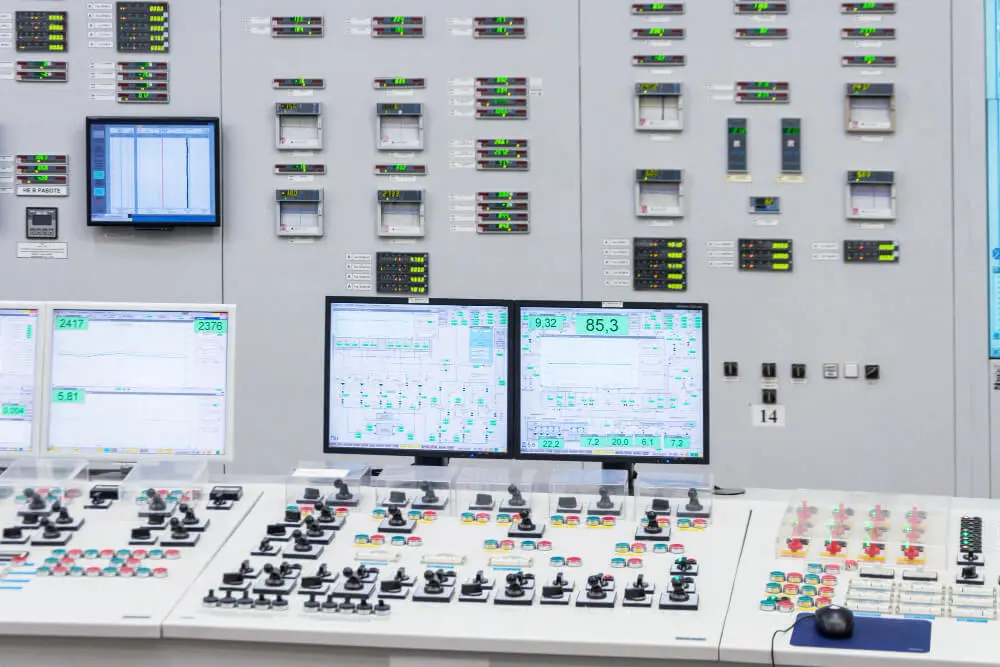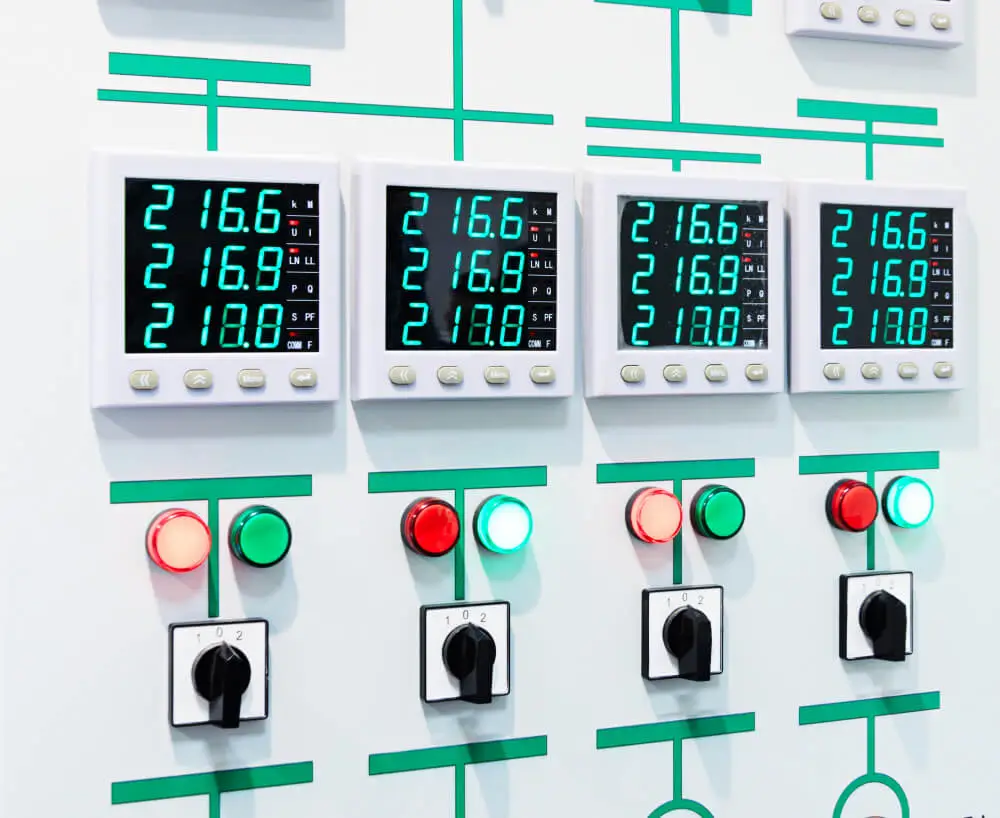If you have large electrical panel loads, using surge protectors is a great way to protect your home. This device is designed to protect electrical equipment from surges, and it is designed to work with a separate fused disconnect switch.
Surge protectors use low-impedance 10AWG cable, which means that they provide maximum convenience, and they can also be serviced by a three-pole circuit breaker.
Surge protectors protect electronics, appliances, and computers from power spikes, but power strips don’t offer as much protection. If you’re planning on using any high-end appliances, it’s wise to use surge protectors instead of power strips.
In addition to protecting appliances and wiring from power surges, surge protectors also protect you from line noise. In order to use a surge protector, you need to use the right type of circuit breaker.
If you want to know more about using circuit breakers with surge protectors, continue reading this article.
What Are Circuit Breakers?
Circuit Breakers are crucial for electrical safety and regulate the flow of electricity. If one part of a circuit is overloaded or has a fault, a circuit breaker will shut down the electricity and cut off the power. This prevents dangerous situations like fire, burnt wiring, and ruined appliances.
A circuit breaker consists of a magnetic and thermal part that detects a rise in temperature or higher tension in a cable. If these two parts detect a problem, the circuit breaker will shut off the current. The circuit breaker’s magnetic and thermal parts are linked and separate when the problem occurs. During this process, the thermal part of the circuit breaker expands rapidly, separating the two plates.
A circuit breaker is a device that will stop the flow of electricity through a circuit when it senses an overloaded condition. It has two main functions: to shut off the current in a circuit if it detects an electrical arc or a fault.
A circuit breaker protects your wiring and motors from being damaged by an overload or a short circuit. It can also protect sensitive electronic equipment, like computers, and prevent an electrical fire. As a result, circuit breakers are crucial components of any electrical system.
What Are The Signs of Circuit Overload?
There are many signs of an overloading electrical circuit, and it’s important to be aware of them. Typically, you’ll notice tripped circuit breakers, discolored or warm wall plates, sizzling receptacles, or buzzing electrical appliances. In addition, there could be a burning smell coming from the walls. Moreover, appliances can also produce a mild shock if the circuit is overloaded.
Fortunately, an overload can be easily avoided if you know the warning signs. The most obvious sign of an overloaded circuit is a tripped circuit breaker. However, you may also notice that lights are dim or flickering when turned on. Additionally, you may notice the cover of a switch or outlet is buzzing or if there’s a burning smell in the air. Overloaded circuits are not only dangerous, but they can also cause fires and electrical hazards.
The wiring of an overloaded circuit is extremely hot. The heat from an overloaded circuit can melt the wiring, which will lead to a fire. Almost 50,000 home fires are caused by electrical malfunctions each year. These malfunctions can cause property damage, injuries, and even death. So, understanding how to spot an overloaded circuit can help you prevent a dangerous situation in your home. The signs of an overloaded electrical circuit are often easily detected.
What Causes An Electrical Circuit to Overload?
Overloading a circuit can result in a power outage and could cause fires. When an electrical circuit is too large, it causes unseen amounts of heat to build up that can damage the internal wiring system or start a fire. In order to prevent overheating, all wiring systems have circuit breakers and fuses to protect them. But accidents do happen, and some circuits have inadequate heat dissipation systems.
Overloading an electrical circuit can also happen due to faulty wiring. This is common when too many appliances are plugged into one circuit. Another cause is “daisy-chaining” power boards. Faulty appliances can also lead to overloading. Bad wiring or grounding can cause a breaker to trip. In the worst-case scenario, an electrical circuit can become dangerously overloaded due to a faulty appliance.
An overloaded circuit occurs when an electrical wire is unable to carry the maximum amount of current. The overloaded circuit may also experience heating and even an electrical fire. Fortunately, each individual circuit is protected by a circuit breaker, which trips when the electrical load exceeds a preset limit. In some cases, an overloaded computer is caused by a malfunctioning cooling system or a malfunctioning component.
What Are Surge Protectors?
When you buy a surge protector, you should know how many joules it has. The higher the number, the more protection it provides. Surge protectors take a hit when power surges occur, and then they refill as the surge is lessened.
Small electronics can be protected with surge protectors up to a thousand joules, while large electronics such as computers and televisions need surge protectors of over 2,000 joules.
A surge protector channels excess voltage into a grounding wire, preventing it from flowing through electronic devices. An electrical surge can fry a computer’s hard drive or motherboard.
Surge protectors don’t protect your computer from lightning, which can deliver millions of volts. You can’t put too much stock in surge protection when your electronics are at risk. To prevent your electronics from suffering, invest in a surge protector.
Using Circuit Breakers with Surge Protectors
When you’re looking for a way to prevent wire fires, surge protectors are a great option. While surge protectors can protect your household appliances from dangerous voltage spikes, they don’t prevent the breaker from tripping. A power strip is not a reliable solution for this problem. To minimize the risk of tripping, use only a few outlets at a time. Also, limit the number of extension cords you’re using.
When selecting a surge protector, be sure to check its breaker ratings. These ratings are typically measured in kilo Amps (kA), which is thousands of amps. In general, the minimum ratings for these devices range from 10kA to 30kA, depending on the type and size of wires. Some surge protectors are rated at higher limits, such as 400kA or higher.
If you’re looking for the best surge protection, you should use a dedicated circuit breaker instead of a standard one. Using a UL-listed breaker with surge protection will improve overall system reliability. The breaker’s purpose is to prevent overheating wires and reduce the risk of fire. If you use a cheap fuse in place of a dedicated circuit breaker, you may be wasting money and compromising your system’s reliability.
If you’re worried about overheating, use a separate fused disconnect switch for the surge protector. You can also use a three-pole circuit breaker to service a surge protector. Using a breaker with this capability is convenient and offers most of the safety aspects of a load center breaker. This type of breaker can also be used for special circuit breaker installations. So, if you’re considering a surge protector, make sure to shop around before making your decision.



